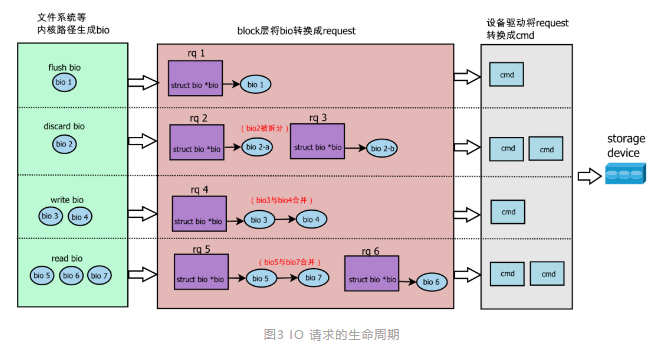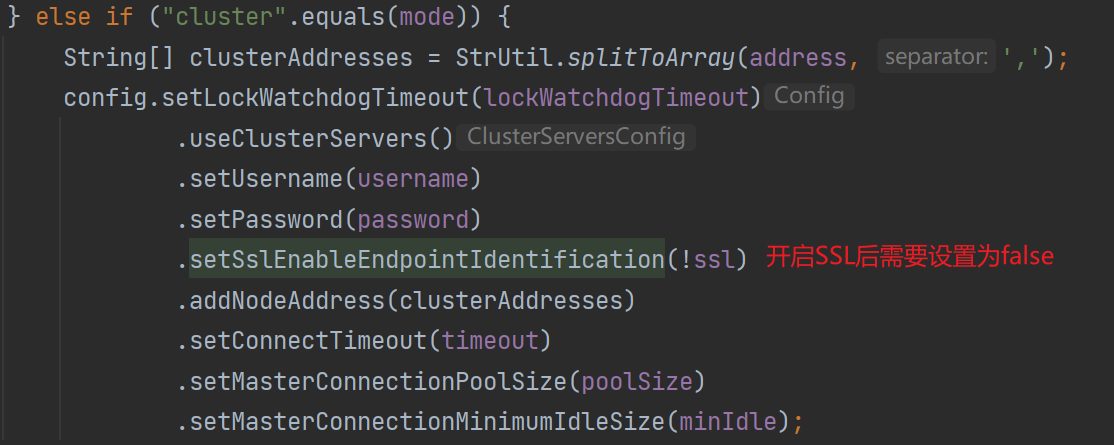目录
🍸前言
🍻一、核心函数式接口
1. Consumer
2. Supplier
3. Function,>
🍺二、场景模拟
1.面向对象设计
2. 策略接口实现(以 Function 接口作为策略)
🍹三、对比
🍷文末
🍸前言
在 Java 8 中引入了Stream API 新特性,这使得函数式编程风格进一步得到巩固,其中伴随着Lambda 表达式和 Stream API 的广泛使用,另一种函数式接口风格亦可以简化代码提升可读性和拓展性,具体如下
🍻一、核心函数式接口
1. Consumer<T>
- 定义了一个接受单一输入参数并且无返回值的操作。常用于数据处理流程中的消费型操作,如打印日志、更新数据库等。
-
List<String> names = Arrays.asList("Alice", "Bob", "Charlie");names.forEach(e-> System.out.println("Welcome login : "+e));// 这里是使用的Consumer<String>,给一个参数执行相关操作// 或者定义一个自定义ConsumerConsumer<String> logAction = name -> System.out.println("Logging action for: " + name);names.forEach(logAction);
2. Supplier<T>
- 定义了一个不接受任何参数但是会产生一个结果的方法引用。常用于提供数据来源或计算某个值。
-
Supplier<Integer> randomIntSupplier = () -> ThreadLocalRandom.current().nextInt(1, 100);System.out.println(randomIntSupplier.get()); // 输出一个1到100之间的随机整数
3. Function<T, R>
- 定义了一个接受一个输入参数并产生一个输出结果的方法引用。常用于数据转换、映射或计算。
-
List<Integer> numbers = Arrays.asList(1, 2, 3, 4, 5);List<Double> doubles = numbers.stream().map((Function<Integer, Double>) Integer::doubleValue).collect(Collectors.toList());doubles.forEach(System.out::println);// 或者自定义FunctionFunction<String, String> upperCaseTransformer = String::toUpperCase;String transformed = upperCaseTransformer.apply("hello"); // 输出 "HELLO"System.out.println(transformed);
🍺二、场景模拟
1.面向对象设计
比如常见的促销活动中,不同的促销策略计算出商品的最终价格是不一样的,采用传统的面向对象设计的话,需要为每一个促销活动创建独立的方法或者类了,并在购物车类中通过直接调用相应的方法计算,如下:
public class ShoppingCart {//购物车中的商品列表private List<Product> products;//普通不打折,统计所有商品的价格即可public double calculateTotalPriceWithNormalPrice() {double totalPrice = products.stream().map(Product::getPrice).reduce(0.0, Double::sum);return totalPrice;}//促销打九折,统计商品价格的九折public double calculateTotalPriceWithTenPercentDiscount() {double totalPrice = products.stream().map(product -> product.getPrice() * 0.9).reduce(0.0, Double::sum);return totalPrice;}//促销直减50 ,小于0 的按照0元计算public double calculateTotalPriceWithFiftyDollarsOff() {double totalPrice = products.stream().map(product -> Math.max(product.getPrice() - 50.0, 0.0)).reduce(0.0, Double::sum);return totalPrice;}// 调用示例public void processCheckout(CheckoutType type) {switch (type) {case NORMAL_PRICE:double normalPrice = calculateTotalPriceWithNormalPrice();// 处理正常价格结算逻辑break;case TEN_PERCENT_DISCOUNT:double tenPercentDiscount = calculateTotalPriceWithTenPercentDiscount();// 处理九折结算逻辑break;case FIFTY_DOLLARS_OFF:double fiftyDollarsOff = calculateTotalPriceWithFiftyDollarsOff();// 处理直减50美元结算逻辑break;}}// 其他方法...
}enum CheckoutType {NORMAL_PRICE,TEN_PERCENT_DISCOUNT,FIFTY_DOLLARS_OFF
}这种方式增加了代码的耦合度,并且如果需要新增或者修改促销策略,就需要修改ShoppingCart类
2. 策略接口实现(以 Function 接口作为策略)
import java.util.function.Function;public interface PromotionStrategy extends Function<Double, Double> {// 不需要额外的方法,因为Function本身就是一种策略(接受一个参数,返回一个结果),它接受原始价格并返回打折后的价格
}创建几个具体的策略实现
public class NormalPriceStrategy implements PromotionStrategy {@Overridepublic Double apply(Double originalPrice) {return originalPrice; // 正常价格,不做打折处理}
}public class TenPercentDiscountStrategy implements PromotionStrategy {@Overridepublic Double apply(Double originalPrice) {return originalPrice * 0.9; // 打九折}
}public class FiftyDollarsOffStrategy implements PromotionStrategy {@Overridepublic Double apply(Double originalPrice) {return Math.max(originalPrice - 50.0, 0.0); // 直减50美元,价格不能低于0}
}之后,在购物车计算逻辑中,可以根据用户选择的促销策略动态计算商品的价格:
public class ShoppingCart {private List<Product> products;private PromotionStrategy promotionStrategy;public ShoppingCart(PromotionStrategy strategy) {this.promotionStrategy = strategy;// 初始化产品列表...}public double calculateTotalPrice() {double totalPrice = products.stream().map(Product::getPrice).map(promotionStrategy).reduce(0.0, Double::sum);return totalPrice;}// 其他方法...
}// 使用示例:
ShoppingCart cart = new ShoppingCart(new TenPercentDiscountStrategy());
// 添加商品到cart...
double finalPrice = cart.calculateTotalPrice(); // 根据策略计算总价这个例子就是使用 PromotionStrategy 扮演了策略角色,不同的折扣策略通过实现 Function<Double,Double> 接口来决定如何计算折扣价,在使用时,可以根据需要选择并注入不同的策略实现。
🍹三、对比
| 策略模式 | 面向对象设计 | |
|---|---|---|
| 优点 |
|
|
| 缺点 |
|
|
其实不难看出,在面对频繁变化的业务逻辑(如促销策略)时,策略模式的优势明显,它有助于代码的可维护性、扩展性和复用性。而在简单、固定的场景下,直接在购物车类中硬编码计算逻辑可能显得更为直接简单。然而,考虑到长期的软件迭代和维护成本,推荐采用策略模式来优化代码结构。
🍷文末
文章到这里就结束了~




![请编写一个函数void fun(int m,int k,int xx[]),该函数的功能是:将大于整数m且紧靠m的k个素数存入xx所指的数组中。](https://img-blog.csdnimg.cn/direct/66bf5daaf2034bb78d80a4f6f1668b89.png)


![[Java EE] 计算机工作原理与操作系统简明概要](https://img-blog.csdnimg.cn/direct/990f97548d1d40689b9e5729d1ea75bd.png)
